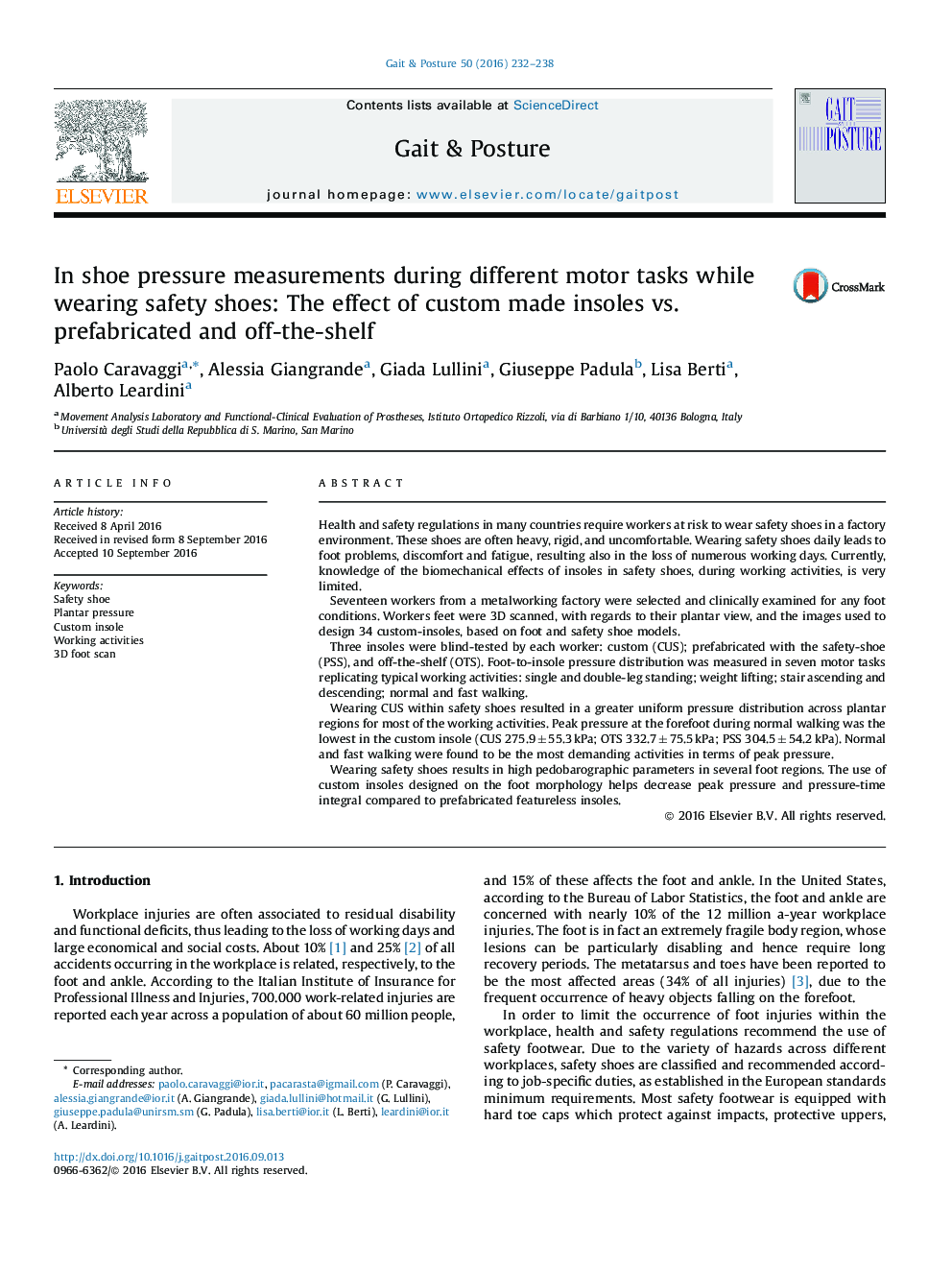| Article ID | Journal | Published Year | Pages | File Type |
|---|---|---|---|---|
| 6205351 | Gait & Posture | 2016 | 7 Pages |
â¢Safety shoes are heavy, rigid, uncomfortable and may cause foot problems.â¢Standard insoles in safety shoes are inadequate and do not account for foot types.â¢Fast walking in safety shoes results in high peak pressures.â¢Custom insoles based on foot shape allow for more even pressure distribution in safety-shoes.
Health and safety regulations in many countries require workers at risk to wear safety shoes in a factory environment. These shoes are often heavy, rigid, and uncomfortable. Wearing safety shoes daily leads to foot problems, discomfort and fatigue, resulting also in the loss of numerous working days. Currently, knowledge of the biomechanical effects of insoles in safety shoes, during working activities, is very limited.Seventeen workers from a metalworking factory were selected and clinically examined for any foot conditions. Workers feet were 3D scanned, with regards to their plantar view, and the images used to design 34 custom-insoles, based on foot and safety shoe models.Three insoles were blind-tested by each worker: custom (CUS); prefabricated with the safety-shoe (PSS), and off-the-shelf (OTS). Foot-to-insole pressure distribution was measured in seven motor tasks replicating typical working activities: single and double-leg standing; weight lifting; stair ascending and descending; normal and fast walking.Wearing CUS within safety shoes resulted in a greater uniform pressure distribution across plantar regions for most of the working activities. Peak pressure at the forefoot during normal walking was the lowest in the custom insole (CUS 275.9 ± 55.3 kPa; OTS 332.7 ± 75.5 kPa; PSS 304.5 ± 54.2 kPa). Normal and fast walking were found to be the most demanding activities in terms of peak pressure.Wearing safety shoes results in high pedobarographic parameters in several foot regions. The use of custom insoles designed on the foot morphology helps decrease peak pressure and pressure-time integral compared to prefabricated featureless insoles.
